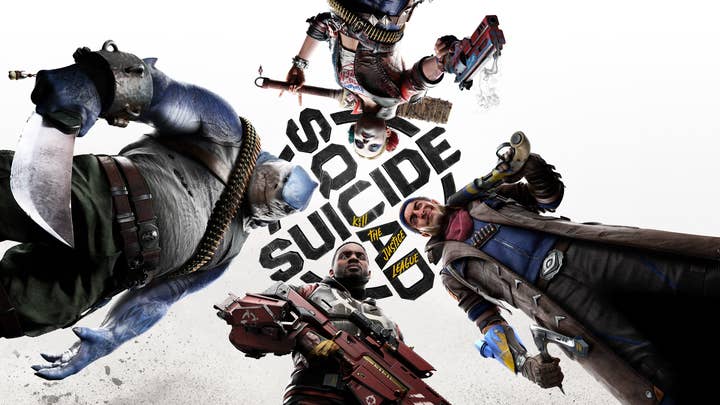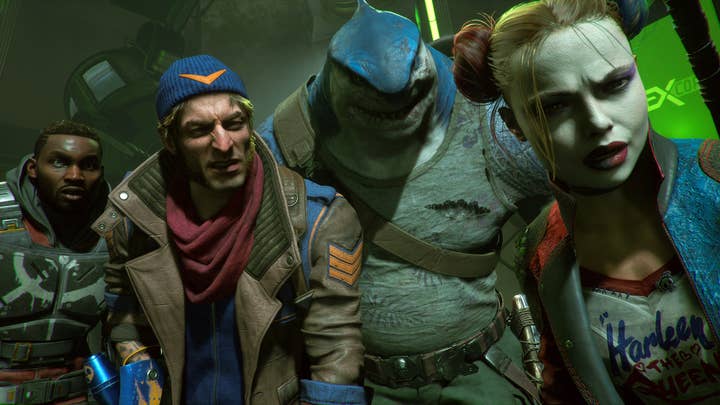The "live service" model is all played out | Opinion
Players are voting with their wallets – like any other industry trend or fad, live service games have seen their moment pass; companies able to pivot away should do so fast
We all have a pretty intuitive understanding of the anatomy of a trend in game design. A very successful title is followed by a wave of games which copy key aspects of its design – some taking inspiration while innovating successfully on the formula, others rather more shamelessly seeking to cash in by copying anything that's not nailed down (or protected by intellectual copyright law).
Within a few years of the launch of the initial defining game – be it Doom, or Command & Conquer, Grand Theft Auto 3, Dark Souls, or any of a host of other widely-imitated titles over the decades – the market is awash with games replicating its ideas.
Diminishing returns kicks in hard, though, as consumers begin to tire of ideas that no longer seem fresh. Some games' ecosystem of "clones" can escape this trap by diversifying enough to become a genre of their own ("Doom-clones" essentially becoming FPS games, "GTA-clones" more or less evolving into the open world genre), while others will spiral away through growing player apathy as attention moves on to the next trend or fad.
That's a normal part of the landscape of the industry and well-understood by most people involved. What's perhaps less understood, or less accepted, is that there are aspects of monetisation design that are just as susceptible to trends and fads as any other part of game design.
Nobody is shocked when a certain type of game design falls out of favour – these trends come and go, after all – but the industry always seems taken by surprise when a monetisation strategy that was effective for a few years suddenly seems to drop off a cliff.
That's a paradigm that's gone from being on top of the world to being for all intents and purposes an epithet
Perhaps there's a false sense that monetisation is based on some kind of concrete economic principles that should remain stable, unlike game design which is to such a large extent a matter of subjective taste – but this fails to acknowledge both the extent to which game design does have some underlying behavioural principles that are very stable, and the extent to which business model design is subject to changing whims of taste.
Just as there are waves and trends in game design, then, there are waves and trends in business model design – and it's often easiest to see the shape of those waves when you're watching them break.
That's what's happening right now with "live service" games, a slightly nebulous term that's come to be understood as encompassing a specific set of monetisation models (battle passes, cosmetic microtransactions, etc.) applied to a loosely defined set of online multiplayer games (either competitive or cooperative) with a match-based structure.
Loot shooters, extraction shooters, battle royale games: there are a variety of game design paradigms at play in the "live service" arena, but the monetisation design paradigm across them remains relatively consistent.
In the space of just a few years, that's a paradigm that's gone from being on top of the world – incredibly successful and broadly welcomed by players as a way to ensure ongoing support for their favourite titles, as well as being more transparent and player-friendly (in theory) than the "pay-to-win" style microtransactions that were public enemy number one at the time – to being for all intents and purposes an epithet.
In 2024, calling your game "live service" might as well be tantamount to telling players it's going to creep into their house at night and kill their dog. The online response to stylish, promising-looking game trailers at awards shows and announcement livestreams notably tanks at the point when players figure out that it's going to be a live service title. Tastes have shifted dramatically, and many publishers and developers have been caught on the hop.
Perhaps the most obvious example – the one I suspect is going to end up as the case-study sidebar in this chapter of the industry's history – is Suicide Squad: Kill the Justice League, which recently launched to a reception so dismal that most people are surely only counting down the weeks until Warner Bros issues a statement with a timeline for the game going offline.

Suicide Squad's poor reception isn't entirely down to its business model – all manner of issues with its writing and game design have also been the subject of significant criticism, and at heart we still lack an answer to the broader question of which Warner Bros executive hit their head incredibly hard a decade ago, waking from their concussion with a deep-seated and entirely baseless conviction that the world really, really wants a lot of Suicide Squad movies and games.
However, the game's live service nature is the headline complaint for many, if not most, people – and many of the other complaints are ultimately rooted in that live service nature, which forced a series of design and narrative decisions onto the title that are utterly unsuited to this IP.
There was a time, perhaps, when a more deftly executed version of Suicide Squad: Kill the Justice League might have been a success regardless – but that was before consumers turned on the fundamental concepts that underline this game's monetisation strategy.
In this current climate, I don't know that fixing the clumsy narrative and repetitive gameplay would have made that much difference to the end result. Players just aren't willing to give the time of day to a game like this right now – they're burned out on the notion of battle passes and seasons, and disgusted by the sight of a premium currency cosmetics store charging as much as some full-price games for its costumes.
The whole business model design of Suicide Squad would have flown two years ago. Launching right now, it finds itself arriving right in the middle of a collapse in public interest and acceptance for the monetisation strategies at its very heart, and thus facing a completely unforgiving view of the deep compromises it made to support those strategies.
Suicide Squad may be the unwilling poster child for this changing trend, but it's hardly the only game facing these problems. We've seen multiple live service titles essentially collapse in recent years – perhaps the most dramatic failure being Babylon's Fall, although the extremely weak response to another superhero IP based live service title, Marvel's Avengers, should have been the canary in the coalmine for any company working in this space.
The whole business model design of Suicide Squad would have flown two years ago. Launching right now, it finds itself arriving right in the middle of a collapse in public interest and acceptance for the monetisation strategies at its very heart
Even some established titles are having serious problems, with Overwatch 2 struggling with retention and declining player sentiment since the shift to a more conventional live service business model, while Destiny 2's troubles are seemingly deep enough to put developer Bungie's independence within new parent company Sony at risk.
Of course, there are other live service games that are doing just fine – Fortnite, Valorant and their ilk continue to have a healthy audience and revenue stream, so we shouldn't act like the live service model itself is going away entirely.
However, within these specific confines of the live service game – loot shooters and their ilk – there's clearly market exhaustion in play. The market for this type of game seems highly saturated, and even some of the market leaders are struggling to hold players' attention.
The battle pass model seems to be a major part of what's making the ground so shaky here. This makes sense; there's a logical maximum number of battle passes a given player will be willing to have active at a given time. Too many, and they don't have any hope of completing each pass and extracting its full value.
With all sorts of games now shipping with battle pass models for often highly spurious reasons, it was inevitable that players would start being suspicious of the model, and highly selective in the ones they choose to purchase – a degree of resistance to purchase that is now impacting the live service model writ large. After all, it's not just battle passes that have been pretty spurious in many cases recently. The live service model itself has struggled for a justification in many recent games.
Publishers have convinced themselves that live service is the solution to the long-standing problem of how to extract enough revenue from games to pay for their ballooning costs – especially where games based on expensive licensed properties are concerned. It has led to live service models being bolted onto games where they simply make no sense, often by developers who, while very experienced and skilled in general, completely lack experience in designing and implementing successful live service games.
Suicide Squad is again a perfect example; an experienced studio forced to play against their own strengths in order to tick boxes in a design document led around by the nose by a pre-ordained business model. In this and many other cases, the starting point was "make a live service game," with all other design considerations coming downstream of that – which leaves nothing worth rescuing when the live service model itself falls out of favour with consumers.
That still leaves the billion-dollar question – how do you fund development when costs are so high that just selling the game for $70 doesn't break even?
One would hope that this spate of failures and negative responses has given pause to some of the companies that threw themselves after the live service fad in recent years. At least Sony's cancellation of the live service game based on The Last of Us is some indication that the publisher has started to come to its senses; it supposedly has a dozen live service games in development, with half of them meant to appear by 2026, which in the current consumer climate sounds like an absolutely humiliating string of commercial failures in the making.
Pulling back from that commitment and narrowing focus to a smaller number of live service titles that actually make some amount of sense in that format (they do still exist!) would involve eating some humble pie, but would likely save the company from huge reputational damage down the line. Other publishers haven't made quite such high-profile commitments to live service gaming; they, at least, could pull back from the brink without losing too much face. Of course, that still leaves the billion-dollar question – how do you fund development when costs are so high that just selling the game for $70 doesn't break even?
Live services were the answer du jour, the latest holy grail to be waved in front of an industry struggling with ballooning costs and a largely stagnant customer base. Like all others before them, from MMORPG subscriptions via DLC packs to F2P microtransactions, they have turned out to offer a partial answer with limited application, at best.
With this wave now breaking and the trend dying out, the industry must seek new answers. Ultimately, there may be no way to effectively square this circle. Game consumers can only reasonably bear so much cost per game, no matter how you package or present it. Either the market must grow or development costs must shrink. There's no business model or One Neat Trick of monetisation design that can bypass that reality.
Sign up for the GI Daily here to get the biggest news straight to your inbox

